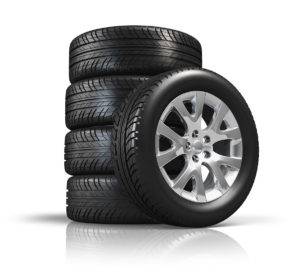 While every driver, no doubt, has purchased tires for a vehicle at one time or another, not everyone knows how to buy the correct tire.
While every driver, no doubt, has purchased tires for a vehicle at one time or another, not everyone knows how to buy the correct tire.
Generally, we count on the person selling us the tires to install the correct ones. Unfortunately, this is not always the case.
Every manufacturer will place a tire decal on the driver’s doorframe. Contained on the decal is the recommended tire size, and, in most cases, the weight and speed rating. This information also is imbedded on the sidewall of the tire. When purchasing tires, these specifications should be taken into account for the replacement tires.
Let’s break down this example tire—P245/40R18 93W. The letter P indicates it is a passenger car tire. You also may find the letters LT to signify light truck or the letter T, which stands for a temporary spare. The next number, in this case, 245, is the measurement across the width of the tread surface in millimeters. Basically, this is how wide the tire is. This is important because it is dangerous to put on a tire that is either too wide or too thin for the rim size.
The next number, 40, is the aspect ratio of the sidewall height compared to the width of the tire. In this case, the sidewall height is 40 percent of the tread width, or 98 mm. The lower the number, the thinner the sidewall will be. Thinner sidewalls will make the car not absorb road imperfections as well because the material will need to be stiffer to support the vehicle’s weight.
The letter R will be found on almost every tire because it stands for radial construction. Some of you may remember the days of bias ply tires, which used to have a D code. There also used to be ZR, which indicated a high speed radial, but this is seldom used any more.
Our next number, 18, is the diameter of the rim the tire will fit. This will mostly be a whole number, but there are some specialty rims, which are an extra half-inch, as in 19.5 inches.
The final set of digits, 93W, will signify the weight and speed rating of the tire. This example has a weight rating of 1,433 pounds, and the speed is 168 miles per hour. So, the four tires on the vehicle will support a vehicle weight of roughly 5,700 pounds.
There also is other information stamped into the sidewall of the tire. Additional data includes the maximum pressure the tire can hold safely. However, the tire pressure you should keep in the tire also is found on the placard in the doorjamb of your specific vehicle.
Another number on the tire is the Department of Transportation (DOT) code. This is the code supplied to the DOT to indicate the tire’s specifications. It also includes the tire-manufactured date as the last four digits. If the last four digits are 2815, this means the tire was made in the 28th week of the year 2015. You want to avoid buying tires more than two years old. The reason being the rubber will dry rot in about five to six years, and you may not get the full tread life out of them before they become cracked and unsafe.
Now, to make things even more confusing, replacement tires will have a tread wear, traction and weather rating. These factors also will need to be considered when making your decision.
H and I Automotive carries multiple brands of tires to suit any need and budget. While all tires come with lifetime balancing, nationwide road hazard protection also is available. To ensure a proper ride from your new tires, we have the latest high-speed road force balance and precision wheel alignment equipment.
For a free quote, please call us at (480) 985-9279. We are a full service professional automotive service center, serving our East Valley neighbors since 2009. Find us online at www.handiautomotive.com or on Facebook and Google+.

